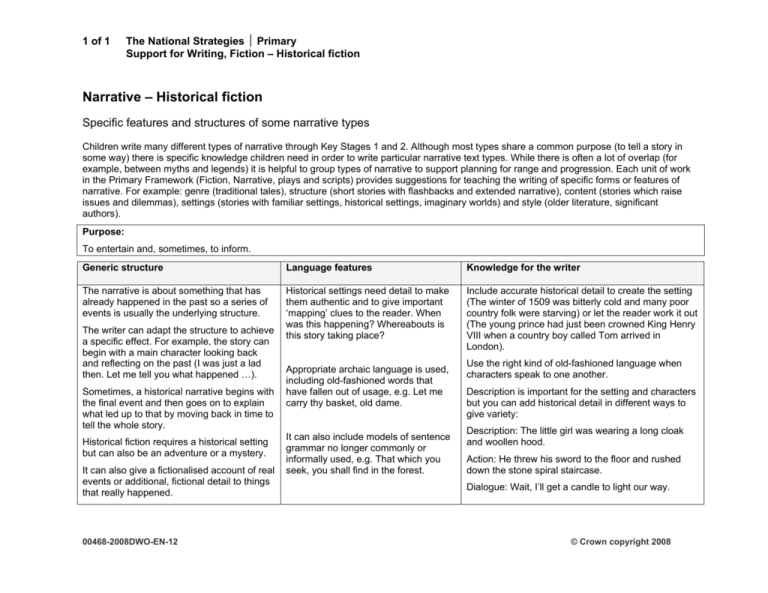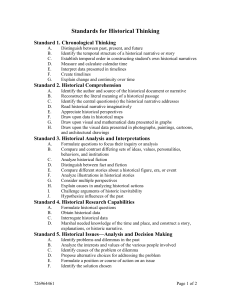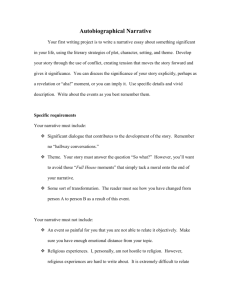Historical fiction - School
advertisement

1 of 1 The National Strategies ⏐ Primary Support for Writing, Fiction – Historical fiction Narrative – Historical fiction Specific features and structures of some narrative types Children write many different types of narrative through Key Stages 1 and 2. Although most types share a common purpose (to tell a story in some way) there is specific knowledge children need in order to write particular narrative text types. While there is often a lot of overlap (for example, between myths and legends) it is helpful to group types of narrative to support planning for range and progression. Each unit of work in the Primary Framework (Fiction, Narrative, plays and scripts) provides suggestions for teaching the writing of specific forms or features of narrative. For example: genre (traditional tales), structure (short stories with flashbacks and extended narrative), content (stories which raise issues and dilemmas), settings (stories with familiar settings, historical settings, imaginary worlds) and style (older literature, significant authors). Purpose: To entertain and, sometimes, to inform. Generic structure Language features Knowledge for the writer The narrative is about something that has already happened in the past so a series of events is usually the underlying structure. Historical settings need detail to make them authentic and to give important ‘mapping’ clues to the reader. When was this happening? Whereabouts is this story taking place? Include accurate historical detail to create the setting (The winter of 1509 was bitterly cold and many poor country folk were starving) or let the reader work it out (The young prince had just been crowned King Henry VIII when a country boy called Tom arrived in London). The writer can adapt the structure to achieve a specific effect. For example, the story can begin with a main character looking back and reflecting on the past (I was just a lad then. Let me tell you what happened …). Sometimes, a historical narrative begins with the final event and then goes on to explain what led up to that by moving back in time to tell the whole story. Historical fiction requires a historical setting but can also be an adventure or a mystery. It can also give a fictionalised account of real events or additional, fictional detail to things that really happened. 00468-2008DWO-EN-12 Appropriate archaic language is used, including old-fashioned words that have fallen out of usage, e.g. Let me carry thy basket, old dame. It can also include models of sentence grammar no longer commonly or informally used, e.g. That which you seek, you shall find in the forest. Use the right kind of old-fashioned language when characters speak to one another. Description is important for the setting and characters but you can add historical detail in different ways to give variety: Description: The little girl was wearing a long cloak and woollen hood. Action: He threw his sword to the floor and rushed down the stone spiral staircase. Dialogue: Wait, I’ll get a candle to light our way. © Crown copyright 2008








